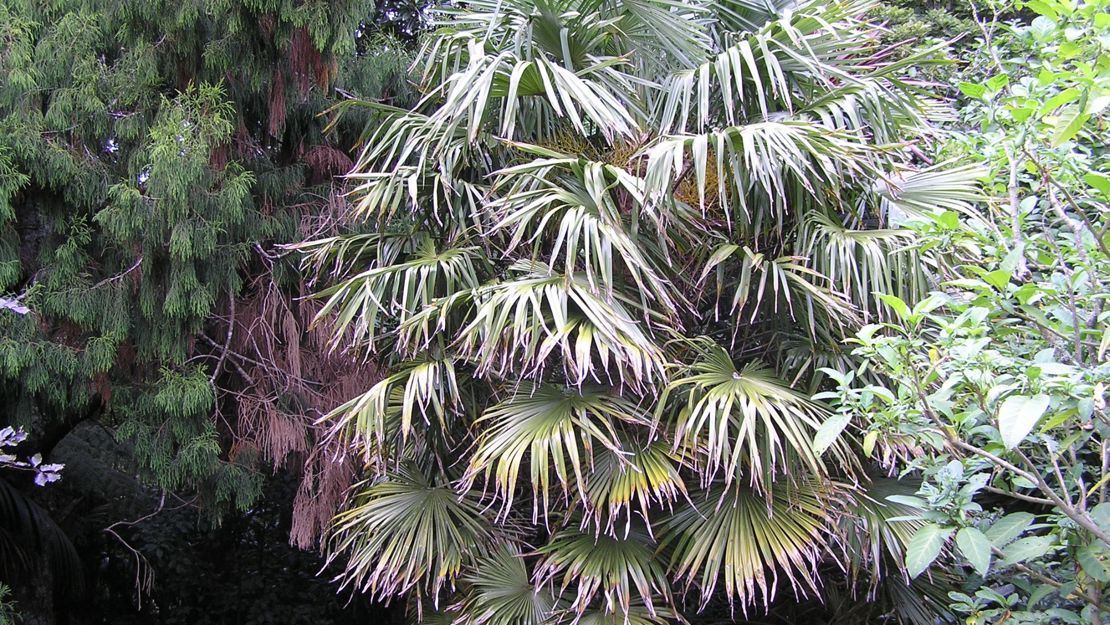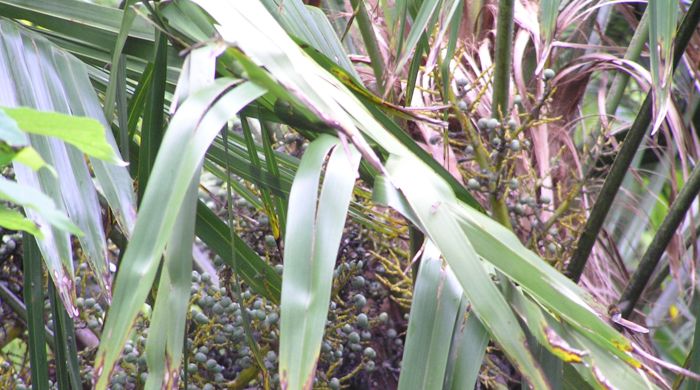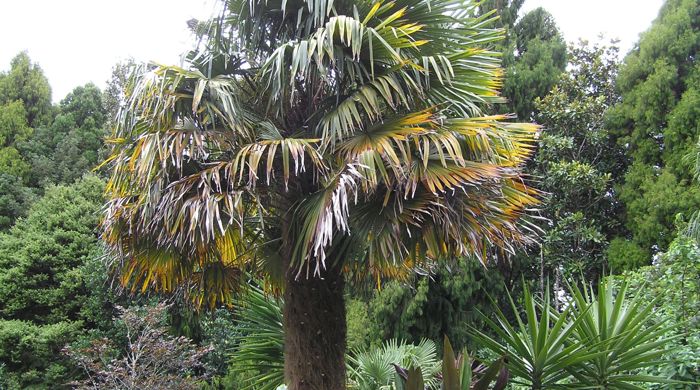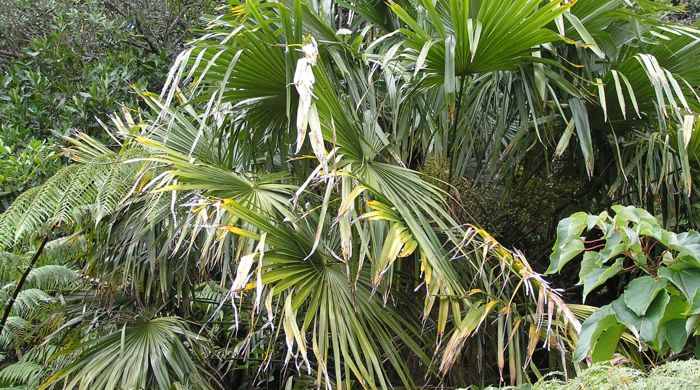Trachycarpus fortunei
Chinese fan palm
Also known as:
Chinese windmill palm, chusan palm
Family: Arecaceae
Origin: China

Regional Pest Management Plan (RPMP) status
- Hauraki Gulf Controlled Area Notice pest
- Waitākere Ranges Heritage Area priority status
- Parkland with Significant Ecological Areas — Site-led (on-park only)
- Whole region — Sustained control
General description
Palm < 12 m tall. Trunk is unbranched and the upper part is covered in fibrous remains of petiole bases. Leaves are fan-shaped and have petioles with sharp marginal teeth. Flowers are yellow, numerous and borne in spring – summer. Drupes are yellow, ripening to blue/black.
What you need to know
To help protect our environment, from 1 September 2022, you:
- will not be allowed to breed, distribute, release or sell Chinese fan palm within the Auckland region. This includes selling within the Auckland region to out-of-region buyers
- will not be allowed to plant Chinese fan palm within the Auckland region, unless you are transferring an existing plant on your land to another location within the boundaries of the same property
- must destroy any Chinese fan palm on land that you occupy if it has been planted in breach of the above rules and you are directed to do so by an authorised person.
Habitats
Forest and riparian margins, disturbed or semi-open vegetation, early successional communities, wetlands, roadsides.
Dispersal
Seeds dispersed by birds and gravity. Human-mediated dispersal through deliberate plantings.
Impact on environment
Reduces native seedling recruitment and growth. Potential to dominate forest understorey. May modify soil biota communities and nutrient cycling. May directly compete with taonga species such as nikau.
Control
Site management
Follow up treated areas 3 times per year. Encourage natural regeneration of native plants or replant treated areas where possible after 2-3 treatments to establish dense ground cover and minimise reinvasion.
Recommended approaches
Physical control
Method: Dig out.
Plant parts requiring disposal: Seeds.
Disposal options: Remove to greenwaste or landfill if practical.
Biocontrol
Biocontrol is currently not available for this species.
Community agrichemical control recommendations
No qualifications: Cut stump and paste freshly cut base of stems with glyphosate gel. Foliar spray seedlings with 20ml glyphosate green per 1L of water.
Certified Handler/Experienced agrichemical user: Drill and inject trees with 500ml glyphosate per 1L of water if safe to do so. Drill 18mm holes (tangentially angled downwards) in a spiral up the trunk. For 50mm stems drill one hole. For 100mm stems drill two holes. For larger stems drill holes 150mm apart.
Safety notes
Large trees must not be drilled that are closer than 1.5 times the height of the tree from paths, walkways and property.
Trees over 4 metres in height should be removed by a qualified arborist.
Caution: When using any herbicide or pesticide please read the label thoroughly to ensure that all instructions and safety requirements are followed.






